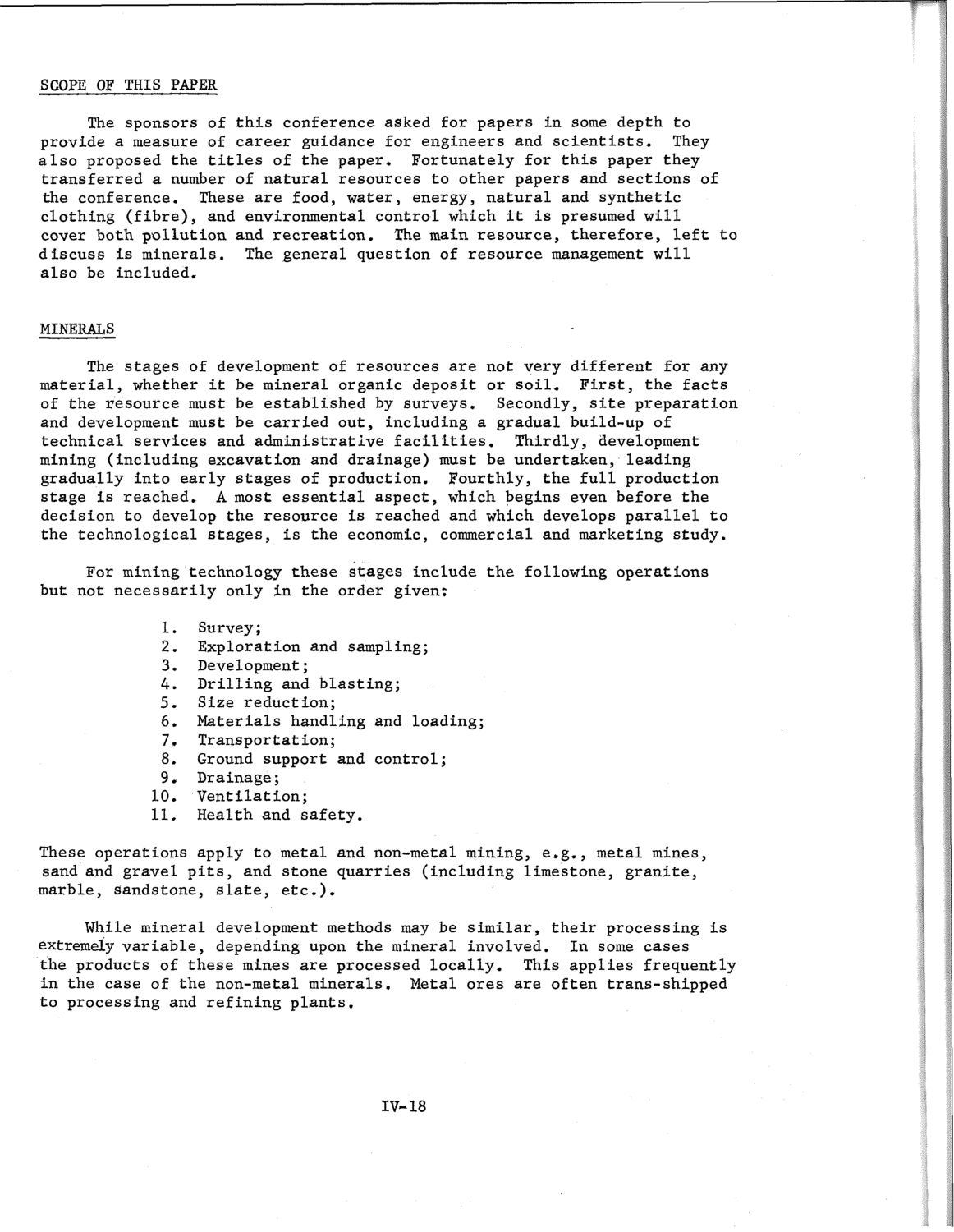| |
| |
Caption: SWE - Proceedings of the First International Conference of Women Engineers and Scientists
This is a reduced-resolution page image for fast online browsing.

EXTRACTED TEXT FROM PAGE:
SCOPE OF THIS PAPER The sponsors of this conference asked for papers in some depth to provide a measure of career guidance for engineers and scientists. They also proposed the titles of the paper. Fortunately for this paper they transferred a number of natural resources to other papers and sections of the conference. These are food, water, energy, natural and synthetic clothing (fibre), and environmental control which it is presumed will cover both pollution and recreation. The main resource, therefore, left to discuss is minerals. The general question of resource management will also be included. MINERALS The stages of development of resources are not very different for any material, whether it be mineral organic deposit or soil. First, the facts of the resource must be established by surveys. Secondly, site preparation and development must be carried out, including a gradual build-up of technical services and administrative facilities. Thirdly, development mining (including excavation and drainage) must be undertaken, leading gradually into early stages of production. Fourthly, the full production stage is reached. A most essential aspect, which begins even before the decision to develop the resource is reached and which develops parallel to the technological stages, is the economic, commercial and marketing study. For mining technology these stages include the following operations but not necessarily only in the order given: 1. 2. 3. 4. 5. 6. 7. 8. 9. 10. 11. Survey; Exploration and sampling; Development; Drilling and blasting; Size reduction; Materials handling and loading; Transportation; Ground support and control; Drainage; Ventilation; Health and safety. These operations apply to metal and non-metal mining, e.g., metal mines, sand and gravel pits, and stone quarries (including limestone, granite, marble, sandstone, slate, etc.). While mineral development methods may be similar, their processing is extremely variable, depending upon the mineral involved. In some cases the products of these mines are processed locally. This applies frequently in the case of the non-metal minerals. Metal ores are often trans-shipped to processing and refining plants. IV-18
| |